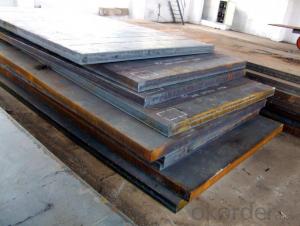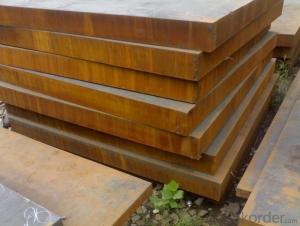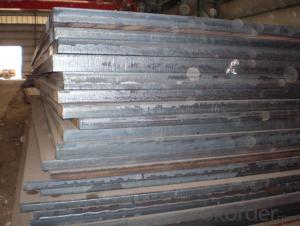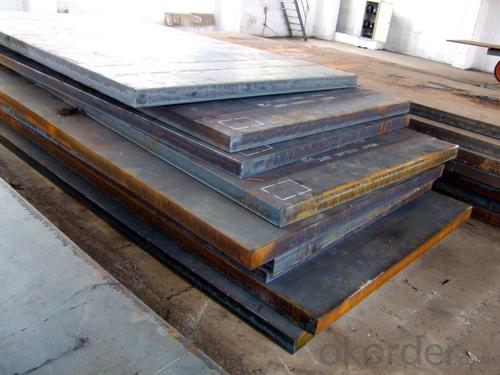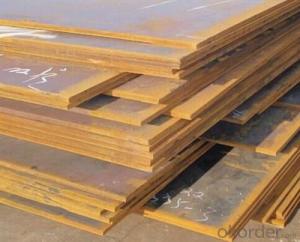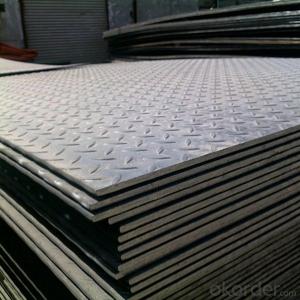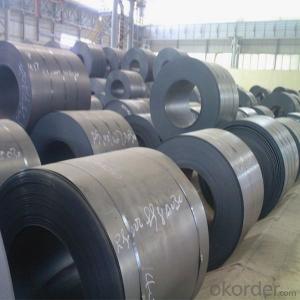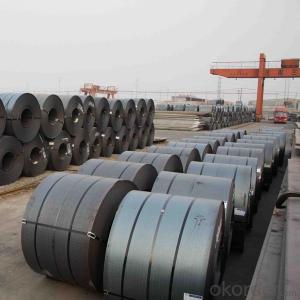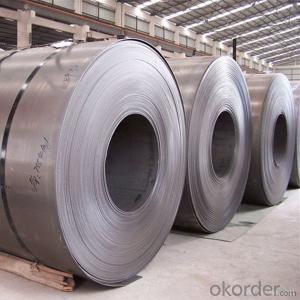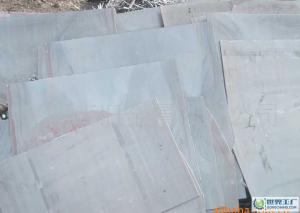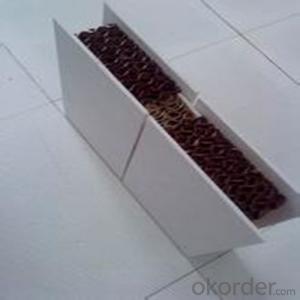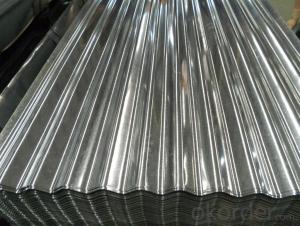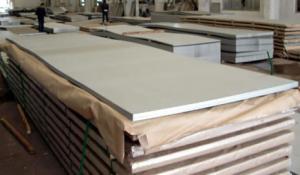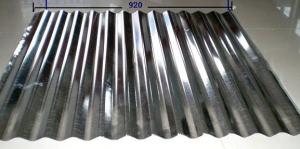Hot-rolled steel plate
- Loading Port:
- China Main Port
- Payment Terms:
- TT OR LC
- Min Order Qty:
- -
- Supply Capability:
- -
OKorder Service Pledge
OKorder Financial Service
You Might Also Like
1, carbon steel rimmed steel sheet (GB3274-88)
Steel rimmed steel sheet as the name suggests is made by boiling hot rolled steel plate made of ordinary carbon structural steel. Rimming steel deoxygenation is a complete steel, steel liquid oxygen content is higher, when molten steel after the injection mould, carbon oxygen reaction to produce large amounts of gas, resulting in liquid steel was named after boiling state. Rimming steel with low carbon content, and because no FeSi deoxidization, so steel containing silicon amount <0.07%. Boiling steel outer layer is crystallized in the boiling state, so the surface clean, compact, good surface quality, good processing performance. Rimming steel no large shrinkage hole, deoxidizer used less, low cost of steel. Rimming steel heart of impurities, with the serious segregation, mechanical heterogeneity, more gas in steel, low toughness, cold brittleness and aging sensitivity is larger, the welding performance is poor, so it does not apply to manufacturing under impact load, welding pieces of the structure and other important components work under low temperature.
Steel plate used in the manufacture of all kinds of stamping parts, construction and engineering structure and the structure of the machine is not too important and parts of boiling. The grade, chemical composition and mechanical properties of the material with GB700-79 (88) (technical specification for steel structure of ordinary carbon steel provisions boiling). Hot rolled thick steel plate with thickness of 4.5-200mm. Production units are mainly of Anshan Iron and steel company, Wuhan, Maanshan Iron and steel, TISCO, Chongqing steel, Handan iron and Steel General Factory, Xinyu steel, Liuzhou steel, Anyang steel company, Yingkou plate plant of Tianjin steel and etc..
2 killed steel, plain carbon steel (GB3274-88)
Ordinary carbon steel plate is made of ordinary carbon structural steel hot-rolled steel billet sedation. Deoxidation fully killed steel is steel, steel liquid deoxidation ferromanganese, ferrosilicon and full aluminum ingot casting liquid steel in front, more calm in the mould, does not produce the boiling state, so named for the killed steel. Advantages of killed steel is uniform chemical composition, so the mechanical properties of each part is uniform, the welding performance and good ductility, corrosion resistance is strong. But the surface of poor quality, concentrated shrinkage, higher cost.
Ordinary killed steel is mainly used for structural components, production impact at low temperature welding structure, and other requirements of high strength. The grade, chemical composition and mechanical properties of the material with GB700-79 (88) (technical conditions of steel carbon structure) provisions in killed steel. Size thickness of 4.5-200mm plate. Anshan Iron and steel company, Wuhan Iron and steel are the main production units, Wuyang Steel Corp, Maanshan Iron and steel, TISCO, Chongqing steel, Handan iron and Steel General Factory, Xinyu steel, Liuzhou steel, Anyang, Tianjin, Yingkou Steel Corp steel medium plate plant, a steel, three factory, Shaoguan iron and steel plant and Ji'nan iron and steel factory.
3, low alloy structural steel (GB3274-88)
Low alloy structural steel plate is made of hot rolled low alloy structural steel. Low alloy steel plate is killed steel and semi killed steel sheet. The utility model has the advantages of high strength, good performance, can save large amounts of steel, reduce the structure weight etc.. Low alloy structural steel is more and more widely used in machinery manufacturing and metal structural parts. Thickness of hot rolled steel plate 4.5-200mm. The production unit including Anshan, Wuhan, Wuyang Steel Corp, Maanshan Iron and steel, Chongqing steel, Xinyu steel, Liuzhou steel, Kunming Steel Corp, Tianjin steel, Shaoguan steel plant, Anyang Steel Corp, a steel, three factory and taiyuan.
Steel plate hot rolling with 4, general structure (GB2517-81)
Mainly used for general structure of buildings, bridges, vehicles, etc.. Steel plate (belt) thickness from 1.2-13.0mm; width from 700-1550mm; the length from 2000-12000mm.
5, welded weathering steel with structure (GB4172-84)
Weathering steel is atmospheric corrosion resistant steel. Welding structure with weathering steel is adding small amount of alloying elements in steel, such as steel, chromium, nickel, molybdenum, niobium, titanium, zirconium and vanadium, which form a protective layer on the surface of a metal matrix, in order to improve the weathering steel, and good welding performance. Mainly used in bridges, buildings and other structures.
6, high weatherability, structural steel plates (GB4171-84)
Atmospheric corrosion resistance of weathering steel is economic. Adding small amount of alloying elements in steel, such as steel, phosphorus, chromium, nickel, molybdenum and niobium, titanium, zirconium and vanadium, the level of protection to improve the weathering resistance steel is formed on the surface of the metal substrate. Mainly applicable to buildings, vehicles, towers and other structures.
7, checkered steel plate (GB3277-82)
Pattern plate is the surface with diamond or lentil shaped rib plate. The specifications to the thickness (rib thickness excluding) said. The pattern plate is provided with antiskid effect, often used as a floor, workshop, working frame escalator pedal, the deck of a ship and car plate etc.. The pattern plate material with ordinary carbon structural steel B1, B2 and B3 grade steel rolling form, its chemical composition meet the GB700-79 (technical conditions of steel carbon structure) regulations. Production units are mainly the Anshan Iron and steel and Anyang Steel Corp.
Steel plate for 8, bridge (YB168-70)
The bridge plate is dedicated to the rack railway or highway bridge plate making. Load and impact requirements and has high strength, toughness and bear the locomotive and vehicle, and have good fatigue resistance, low temperature toughness of certain and atmospheric corrosion resistance. Tethered to the welding of bridge steel also has good welding performance and low notch sensitivity. The main structural element for a railway bridge and highway bridge span between 46-160mm. The specifications: thickness from 6-50mm, width, length from 1.0-2.4mm from 2.0-16mm. The production of bridges in China are mainly used steel Anshan, Wuhan steel, steel unit three factory and Chongqing steel etc..
- Q: What are the common applications of galvannealed steel sheets?
- Galvannealed steel sheets are commonly used in a variety of applications, including automotive manufacturing, construction, appliances, and HVAC systems. The corrosion-resistant properties of galvannealed steel make it ideal for outdoor structures and components exposed to harsh environments. Additionally, its excellent paint adhesion and formability make it a preferred choice in the production of automotive parts and household appliances.
- Q: Are steel sheets suitable for electrical grounding applications?
- Indeed, electrical grounding applications can find steel sheets to be fitting. As a proficient conductor of electricity, steel can proficiently transmit electrical charges to the ground. Due to their endurance, robustness, and cost-efficiency, steel sheets are frequently employed in grounding applications. Their installation is simple, and they offer a trustworthy link to the earth, guaranteeing a secure pathway for electrical currents in the event of a fault or surge. Nevertheless, it is imperative to ensure the proper installation and upkeep of steel sheets, as any corrosion or harm can impede their conductivity and hinder their efficacy in grounding electrical systems.
- Q: What type of welding rod is used for steel Q245R and Q235B material?
- If the welding weld is non pressure parts, you can use the CO2 gas shielded arc welding, using 1.2 or 1.6 ER50-6 diameter wire welding, weld spatter if you need better or less, recommend the use of Ar:CO2 mixed gas 8:2 welding.
- Q: What are the different types of steel sheet finishes for automotive applications?
- There are several different types of steel sheet finishes commonly used in automotive applications. These finishes are applied to the surface of the steel sheet to enhance its appearance, durability, and corrosion resistance. One common type of finish is the mill finish, which is the natural finish of the steel sheet after it has been hot or cold rolled. This finish has a dull gray appearance and is typically used for applications where aesthetics are not a major concern. Another popular finish is the galvanized finish, which involves coating the steel sheet with a layer of zinc to protect it from corrosion. This finish provides excellent corrosion resistance and is commonly used in automotive body panels and structural components. There is also the painted finish, where the steel sheet is coated with a layer of paint. This finish not only improves the aesthetics of the steel sheet but also provides an added layer of protection against corrosion. Painted finishes can come in a variety of colors and textures, allowing for customization and branding options. Additionally, there are specialized finishes such as the electro-galvanized finish, which involves applying a thin layer of zinc to the steel sheet through an electroplating process. This finish provides enhanced corrosion resistance and is commonly used in automotive parts that require a high level of protection against rust. Lastly, there is the brushed or polished finish, which involves mechanically polishing the surface of the steel sheet to create a smooth and reflective appearance. This finish is often used for decorative purposes in automotive applications, such as trim or accents. In summary, the different types of steel sheet finishes for automotive applications include mill finish, galvanized finish, painted finish, electro-galvanized finish, and brushed/polished finish. Each type of finish offers unique benefits in terms of appearance, durability, and corrosion resistance, allowing manufacturers to choose the most suitable option for their specific automotive application.
- Q: What is the maximum temperature that steel sheets can withstand?
- The maximum temperature that steel sheets can withstand depends on the specific grade of steel being used. However, most steel sheets can typically withstand temperatures up to 1,500 degrees Fahrenheit (815 degrees Celsius) without significant deformation or loss of strength.
- Q: What are the different surface treatments available for steel sheets?
- Some common surface treatments available for steel sheets include galvanizing, painting, powder coating, and plating.
- Q: Why should the back of the steel sheet pile cofferdam be pumped after the construction of the pile cap?
- The appearance of surface defects of steel sheet pile, length, width, thickness, end rectangle ratio, flatness and lock shape content of inspection, do not meet the requirements of steel sheet pile is corrected, in order to reduce the difficulties in piling process.
- Q: Can steel sheets be used for radiation shielding?
- Yes, steel sheets can be used for radiation shielding. Steel is a dense material that effectively blocks and attenuates various forms of radiation, making it suitable for shielding applications in industries such as nuclear power, healthcare, and aerospace.
- Q: What is the difference between a pre-annealed and full hard steel sheet?
- A pre-annealed steel sheet refers to a steel sheet that has undergone the annealing process, which involves heating the steel to a specific temperature and then cooling it slowly. This process helps to relieve internal stresses in the steel and improve its ductility and workability. As a result, pre-annealed steel sheets possess higher levels of formability and are easier to shape and manipulate compared to their non-annealed counterparts. On the other hand, a full hard steel sheet has not undergone the annealing process and retains its original hardness and strength. Full hard steel sheets are typically used in applications that require high strength, durability, and resistance to deformation. These sheets are more rigid and less ductile, making them suitable for applications where shape retention and stiffness are critical, such as in automotive components or structural supports. In summary, the main difference between pre-annealed and full hard steel sheets lies in their formability and strength characteristics. Pre-annealed steel sheets are more malleable and easier to shape, while full hard steel sheets offer higher strength and rigidity. The choice between the two depends on the specific requirements of the application and the desired balance between formability and strength.
- Q: How are steel sheets protected during transportation by air?
- Steel sheets are protected during transportation by air through various measures such as packaging them in protective covers, using cushioning materials like foam or bubble wrap, securing them with straps or bands to prevent movement, and placing them in sturdy crates or pallets to minimize the risk of damage. Additionally, some steel sheets may undergo corrosion-resistant coatings or be stored in climate-controlled containers to protect them from moisture or extreme temperature changes during transit.
Send your message to us
Hot-rolled steel plate
- Loading Port:
- China Main Port
- Payment Terms:
- TT OR LC
- Min Order Qty:
- -
- Supply Capability:
- -
OKorder Service Pledge
OKorder Financial Service
Similar products
Hot products
Hot Searches
Related keywords
